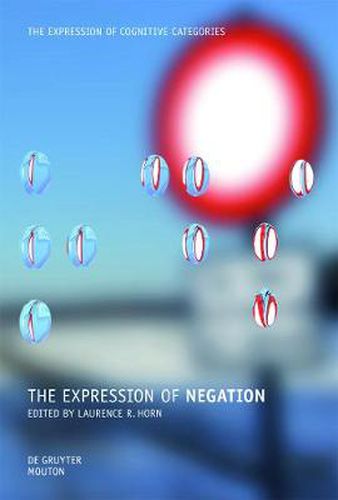Readings Newsletter
Become a Readings Member to make your shopping experience even easier.
Sign in or sign up for free!
You’re not far away from qualifying for FREE standard shipping within Australia
You’ve qualified for FREE standard shipping within Australia
The cart is loading…






This title is printed to order. This book may have been self-published. If so, we cannot guarantee the quality of the content. In the main most books will have gone through the editing process however some may not. We therefore suggest that you be aware of this before ordering this book. If in doubt check either the author or publisher’s details as we are unable to accept any returns unless they are faulty. Please contact us if you have any questions.
Negation is a sine qua non of every human language but is absent from otherwise complex systems of animal communication. In many ways, it is negation that makes us human, imbuing us with the capacity to deny, to contradict, to misrepresent, to lie, and to convey irony. The apparent simplicity of logical negation as a one-place operator that toggles truth and falsity belies the intricate complexity of the expression of negation in natural language. Not only do we find negative adverbs, verbs, copulas, quantifiers, and affixes, but the interaction of negation with other operators (including multiple iterations of negation itself) can be exceedingly complex to describe, extending (as first detailed by Otto Jespersen) to negative concord, negative incorporation, and the widespread occurrence of negative polarity items whose distribution is subject to principles of syntax, semantics, and pragmatics. The chapters in this book survey the patterning of negative utterances in natural languages, spanning such foundational issues as how negative sentences are realized cross-linguistically and how that realization tends to change over time, how negation is acquired by children, how it is processed by adults, and how its expression changes over time. Specific chapters offer focused empirical studies of negative polarity, pleonastic negation, and negative/quantifier scope interaction, as well as detailed examinations of the form and function of sentential negation in modern Romance languages and Classical Japanese.
$9.00 standard shipping within Australia
FREE standard shipping within Australia for orders over $100.00
Express & International shipping calculated at checkout
This title is printed to order. This book may have been self-published. If so, we cannot guarantee the quality of the content. In the main most books will have gone through the editing process however some may not. We therefore suggest that you be aware of this before ordering this book. If in doubt check either the author or publisher’s details as we are unable to accept any returns unless they are faulty. Please contact us if you have any questions.
Negation is a sine qua non of every human language but is absent from otherwise complex systems of animal communication. In many ways, it is negation that makes us human, imbuing us with the capacity to deny, to contradict, to misrepresent, to lie, and to convey irony. The apparent simplicity of logical negation as a one-place operator that toggles truth and falsity belies the intricate complexity of the expression of negation in natural language. Not only do we find negative adverbs, verbs, copulas, quantifiers, and affixes, but the interaction of negation with other operators (including multiple iterations of negation itself) can be exceedingly complex to describe, extending (as first detailed by Otto Jespersen) to negative concord, negative incorporation, and the widespread occurrence of negative polarity items whose distribution is subject to principles of syntax, semantics, and pragmatics. The chapters in this book survey the patterning of negative utterances in natural languages, spanning such foundational issues as how negative sentences are realized cross-linguistically and how that realization tends to change over time, how negation is acquired by children, how it is processed by adults, and how its expression changes over time. Specific chapters offer focused empirical studies of negative polarity, pleonastic negation, and negative/quantifier scope interaction, as well as detailed examinations of the form and function of sentential negation in modern Romance languages and Classical Japanese.